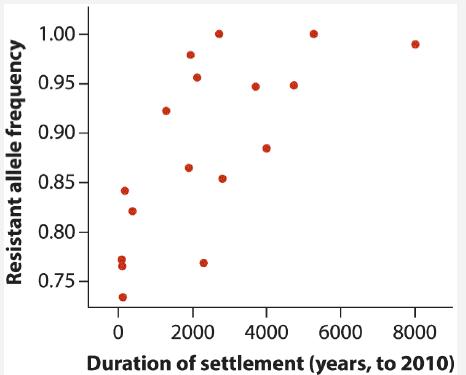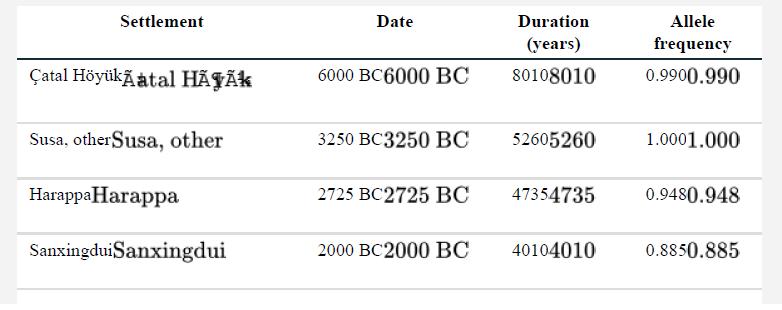Calculation practice: Spearman rank correlation. As human populations became more urban from prehistory to the present, disease
Question:
Calculation practice: Spearman rank correlation. As human populations became more urban from prehistory to the present, disease transmission between people likely increased. Over time, this might have led to the evolution of enhanced resistance to certain diseases in settled human populations. For example, a mutation in the SLC11A1 gene in humans causes resistance to tuberculosis. Barnes et al. (2011) examined the frequency of the resistant allele in different towns and villages in Europe and Asia and compared it to how long humans had been settled in the site (“duration of settlement”). If settlement led to the evolution of greater resistance to tuberculosis, there should be a positive association between the frequency of the resistant allele and the duration of settlement.
The data are below (durations based on dates BC have been rounded). The relationship appears curvilinear, so we will use the Spearman’s correlation to test an association.




a. Rank duration from low to high.
b. Rank allele frequency from low to high, assigning mid ranks to ties.
c. Calculate the sum of squares for the ranks of duration and allele frequency, and the sum of products.
d. Compute the Spearman’s correlation coefficient.
e. What is the sample size?
f. State the null and alternative hypotheses.
g. Obtain the critical value for the Spearman’s correlation corresponding to α=0.05.
h. Draw the appropriate conclusion.
Step by Step Answer:

The Analysis Of Biological Data
ISBN: 9781319226237
3rd Edition
Authors: Michael C. Whitlock, Dolph Schluter





